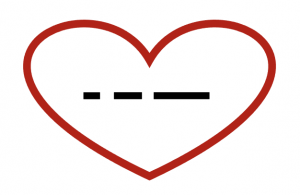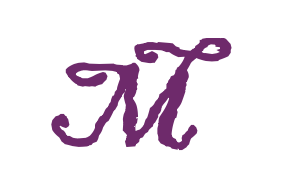One of the first things I remember from my early days of editing is wondering what on earth em dashes and en dashes were. I’d come across the words on occasion, and it was finally time to get to the bottom of this mystery.
If you’re going to write or edit with excellence, you need to know their distinctions. When I finally found the answer in CMOS 6.75, it left me with a statement forever impressed on my mind: “correct use of the different types is a sign of editorial precision and care.”

Hyphens (-)
The hyphen character has a dedicated key on most keyboards. It’s usually located next to the “0” key. Hyphens are used as a separator for compound words and names. They are also used between numbers that don’t signify a range and numbers that represent an individual date.
well-known
David Martyn Lloyd-Jones
978-0-226-10420-1
2016-02-01
En Dashes (–)
 What an odd name! Why would you call this character an en dash? The answer is quite logical. An en dash measures the width of an n, hence, en dash. En dashes can be created by holding the Ctrl key and pressing the minus key on your numeric keypad (for PC) or holding the Option key and pressing the hyphen key (for Mac). En dashes are used as connectors. They signify up to and including (or through). They are used for ranges of various kinds.
What an odd name! Why would you call this character an en dash? The answer is quite logical. An en dash measures the width of an n, hence, en dash. En dashes can be created by holding the Ctrl key and pressing the minus key on your numeric keypad (for PC) or holding the Option key and pressing the hyphen key (for Mac). En dashes are used as connectors. They signify up to and including (or through). They are used for ranges of various kinds.
The year 2000–2016
John 3:16–18
Chapters 6–9
8:30 a.m.–4:30 p.m.
Em Dashes (—)
 Like en dashes, em dashes have a reasonable explanation for their funny-sounding name. Have you guessed it? Em dashes measure the width of an m (at least at some point, some m must’ve measured that wide). So there you go. Em dashes can be created by holding the Ctrl and Alt keys and pressing the minus key on the numeric keypad (for PC) or holding the Option and Shift keys and pressing the hyphen key (for Mac). Em dashes are used in place of commas, parentheses, or colons. They are especially useful when an abrupt break in thought is needed. They are also used to set off a noun preceding a pronoun that introduces the main clause.
Like en dashes, em dashes have a reasonable explanation for their funny-sounding name. Have you guessed it? Em dashes measure the width of an m (at least at some point, some m must’ve measured that wide). So there you go. Em dashes can be created by holding the Ctrl and Alt keys and pressing the minus key on the numeric keypad (for PC) or holding the Option and Shift keys and pressing the hyphen key (for Mac). Em dashes are used in place of commas, parentheses, or colons. They are especially useful when an abrupt break in thought is needed. They are also used to set off a noun preceding a pronoun that introduces the main clause.
Since she hadn’t retrieved the receipt from herpurse—let alone listed the expense in her ledger—her records were not current.
The song—which I remembered from last night—blared through the speakers.
“I’m not sure I—”
Galatians—that was her favorite book at the moment.
The thing you need to watch out for in fiction editing is the overuse of the em dash. It’s easy to get em-dash happy (they’re so fun!). When the em dash is used in dialogue to signify interruption, its use is usually appropriate, even if frequent. But when you use it for effect—to give that “hard break” feeling—it needs to be used sparingly. How sparingly? Well, that’s up to your judgment, your editor’s judgment, and what works and how the MS reads.
As you move forward to greater heights of writing and editing, remember that your voice is significant, and your contribution is unique.
Pleasant penning,
Rachel E. Bradley
Freelance Editor and Indexer
NAIWE Copyediting Expert
Revisions by Rachel Inc.
www.RevisionsbyRachel.com
Rachel E. Bradley holds a BS degree in Paralegal Studies from Northeastern State University in Oklahoma. She graduated summa cum laude in 2006 and has been awarded the Advanced Certified Paralegal designation by the National Association of Legal Assistants. She is a gold member of the Christian PEN: Proofreaders and Editors Network, is an established freelance editor with the Christian Editor Connection, is an instructor with the PEN Institute, is a judge for the Editors’ Choice Award, has served as faculty for PENCON—the only conference for editors in the Christian market—and presented at the 2024 Experience Writing Conference in Tulsa, Oklahoma.
After nine years in the legal field, Rachel transitioned to her current career as a freelance editor and indexer. She now owns Revisions by Rachel Inc. In 2018, she lost her first husband, Matthew, after an intense battle with brain cancer. That experience has given her a new understanding and a fierce compassion for people who feel broken and are hurting. In celebration of continued life and hope, she became a licensed skydiver. Any chance she gets, she takes to the skies with her rainbow canopy, “Promises.”
In early 2021, she asked God to give her an arranged marriage and gave him permission to choose her next husband. In an incredible tale of trusting God and giving him her yes without exception, she is now gratefully and blessedly married to Alexander Bradley. They have been assigned the awe-inspiring and continually humbling task of raising two incredible children.
Rachel enjoys, among other things, Bible studies, dancing during church worship, skydiving, swing dancing, rock climbing, reading, teaching, discussing important issues, watching Star Trek, sewing, cooking, Pilates, horseback riding, water sports, playing guitar, and snow skiing.


8:30 a.m.–4:30 p.m.
Talking of editorial precision and care, don’t you think that in the above example the en dash needs to have a space on either side? In the absence of such space, the en dash appears to connect a.m. and 4, two disparate bits, whereas the dash is supposed to connect 8:30 a.m. and 4:30 p.m.
I’d therefore type this as 8.30 a.m. – 4.30 p.m. (reserving the colon for the 24-hour system, as in
08:30 – 16:30).
“They are also used to set off a noun preceding a pronoun that introduces the main clause.”
Wonder whether you’d like to give an example.